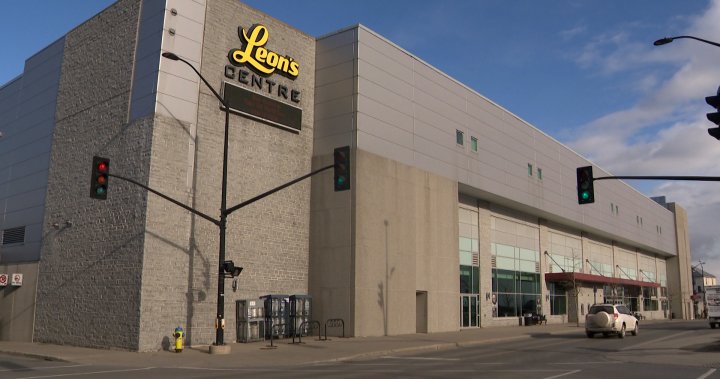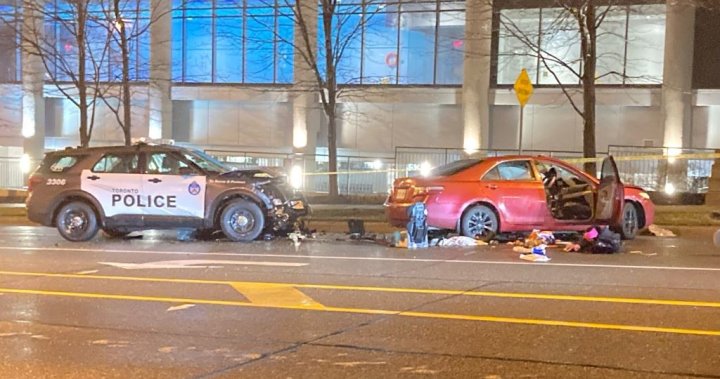Hamilton is set to expand cleanups of debris and waste connected with the city’s encampments to include some private properties.
The city’s housing director says the initiative comes amid litter complaints that have moved beyond city-owned parks and properties and into commercial areas as well as non-public entities.
In an update on the municipality’s encampment and homelessness issues, a general issues committee approved the request which could mean some of the tidying up spurred on by public complaints to the city’s encampment response web page could begin in weeks.
“Going forward, if there is litter on private property, the proposal – that will go to council next week – will allow clean up on private property and private small businesses in proximity to encampments, ” director Michelle Baird explained.
“We still need to go through a process to get a contractor in place to allow that to happen.”
Currently, the city fulfills encampment specific cleanups on a one-off basis as well as through a weekly scheduled bag pickup through its parks department.
Baird says general garbage, debris and sharp objects like needles are the biggest complaints received from residents.
Costs are expected to be picked up by the city, however, a ballpark figure on how that might impact the annual budget is still yet to be determined.
Breaking news from Canada and around the world
sent to your email, as it happens.
“We don’t know fully what the cost is right now, as the proposal that council (would) approved allows for staffing … as well as a procurement contract,” said Baird.
Director of Environmental Services Cynthia Graham characterized regular pickups at large encampments as “pretty difficult” to complete with some having steep slopes and remote areas not easily accessed on foot.
She revealed that contractors have already been deployed to remove and repair some problems on lands not owned by the city but where licence agreements exist with a third party.
“So parkland that is adjacent to hydro land might look all like parkland, but when it comes to enforcement of encampments on the hydro properties, that can get a little bit complicated for us,” Graham told councillors.
Other issues that required taking on contractors included vandalism and hardwiring of light standards which have been used to power heating, cooking devices and even charging of cell phones.
Fires have also been recorded after trees were burned or cut for firewood which precipitated flame damage to park amenities and adjacent residences, according to Graham.
The city’s acting director of Licencing and Bylaw services echoed concerns over health and safety around the sites and admitted there are struggles to meet the four-day deadline for inspecting new encampments showing increased activity.
Dan Smith told councillors “nicer weather” has generated encampment growth across the city “bottlenecking” the process of seeking out sites that require inspection.
City staff estimate there are currently about 200 people living within 50 separate encampments throughout the city.
A number that’s up slightly from March when the city reported some 140 residing in 58 active sites.
A pivot to rely on housing outreach teams to identify new or growing encampments has helped alleviate monitoring efforts.
“It’s creating some additional time for our staff to get to these locations to assess and then issue notices,” Smith described. “We’re continuing to see an increase in time and resources to address large-scale sites. The larger scale encampments can take multiple days, additional resources and supports to complete the enforcement.”
The city’s expenditures to manage encampments is blended in with its housing sustainability roadmap which currently draws on $158 million from its annual budget and another $72.3 million in reserve funding over three years.
Some help for homelessness comes in the form of annual federal and provincial contributions of $9 million and $28 million respectively.
In all, the city’s General Manager of Finance says the model is “unsustainable” since drawing off of city reserves does have a limit.
“It will crowd out other priorities of council, other requirements, legislative requirements, whether those are … infrastructure, funding of infrastructure (and) funding of other programs such as recreation programs,” GM Mike Zegarac said.
No significant changes are being made to the city’s encampment protocol, which will remain in place until at least the end of spring.
It currently allows for clusters of up to five tents on city land.
Baird says councillors will get another look at the homelessness situation in June when another update and recommendations are presented to a committee by housing services.




